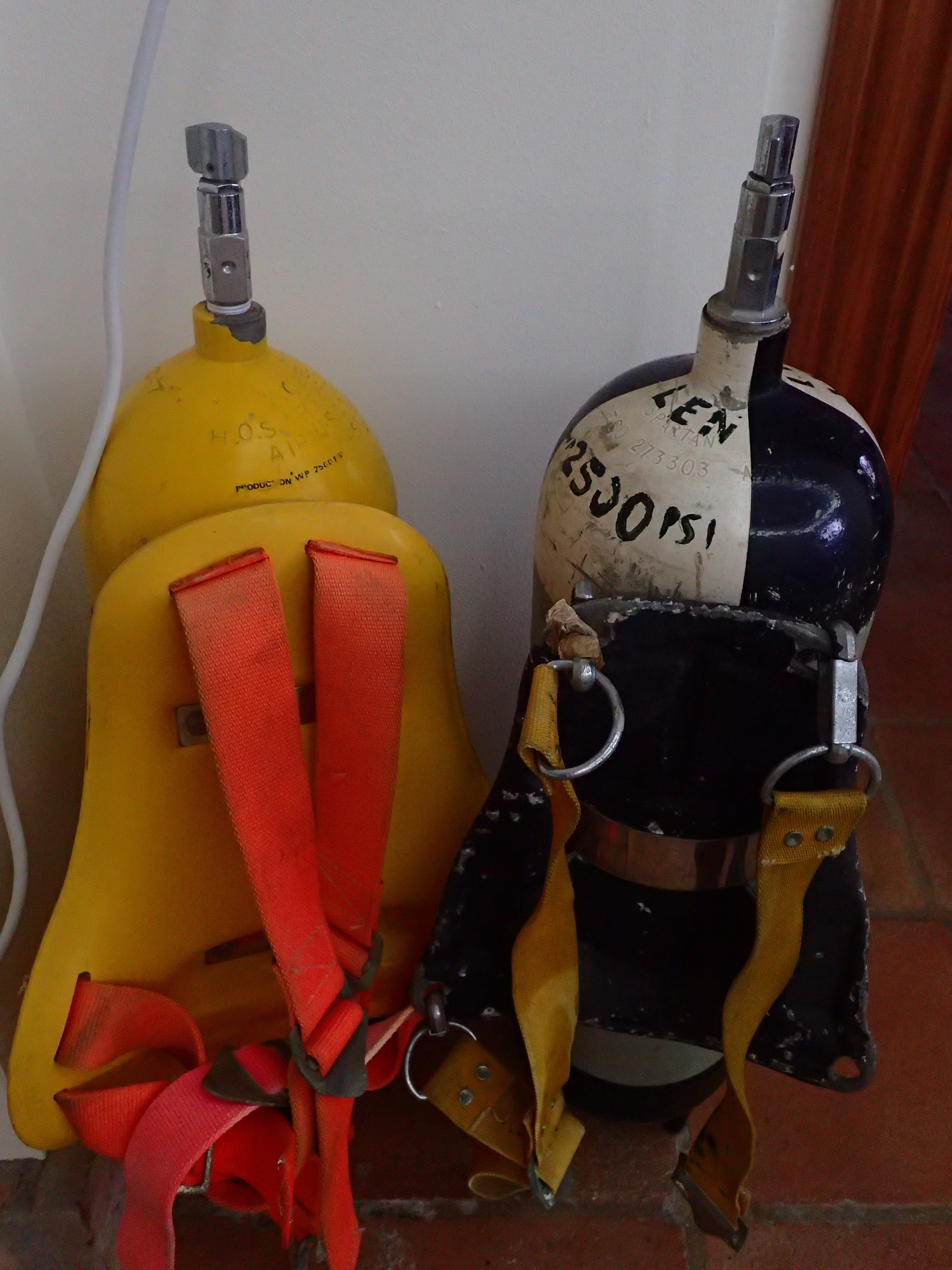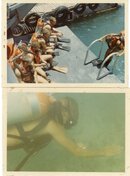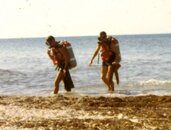You have two vintage steel 72 cubic foot tanks with a 1/2 inch tapered thread K-valve.
The Suunto compass is one that many of us used, and I believe it was also issued to us in the US Air Force for our diving as pararescuemen. If you look at it in the dark, the yellow lines may be luminiecent, even without prior exposure to light. That would be because the illumination is slightly radioactive (alpha particles); you can confirm this by placing it close to a Giege counter instrument.
This Suunto compass is designed for the wrist, and is used by placing the hand with the compass on it on the other arm just above the elbow, and grabbing that opposite arm. When on the surface, point the opposite arm toward your destination, keep the compass arm in exactly that orientation, but release the grip and with the opposite hand rotate the bazzle until the double dash mark on the ring is directly over the magnetic needle. This fixes the angle for you to use when submerged. Submerge, again fix your compass hand to the extended arm, and make sure the needle remains inside the double dashes as you swim to your destination underwater. The bottom photo, from the U.S. Naval School for Underwater Swimmers in Key West, Florida, 1967 shows USAF pararescrueman Bob Means (my buddy for this dive) using this technique for swimming an underwater compass course (1500 yard swim underwater to a specific target on the beach). The second photo shows a buddy team coming ashore after a compass swim.
This compass can also ne used to fix your location to a shoe on a map, but some computation is necessary to translate the magnetic readings to true north used on most maps, and is a bit beyond this discussion. (The technique is a triangulation technique between two or three landmarks on the map, but uses true north for the map, which usally contains the "declination" between true and magnetic north at that location.)
SeaRat











